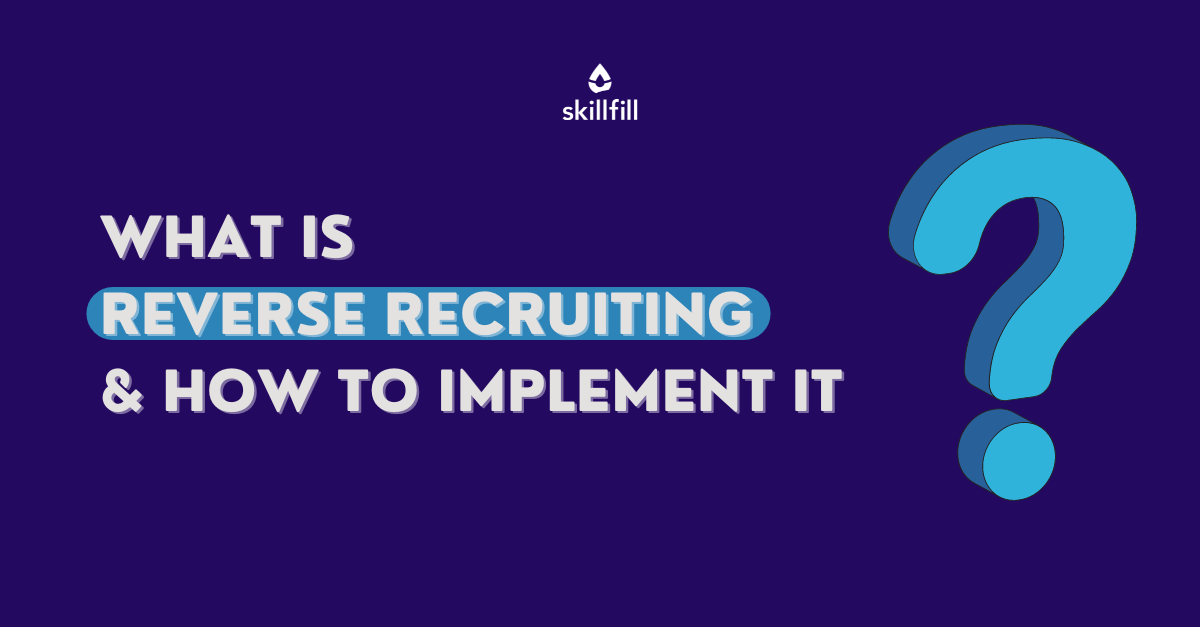Reverse Recruiting: A Fresh Technique to Skill Acquisition
Reverse Recruiting: A Fresh Technique to Skill Acquisition
Blog Article
Boost Your Hiring Game With Strategic Reverse Hiring Techniques
In the world of skill procurement, standard recruiting techniques have actually long been the norm. Nonetheless, as the landscape of employing develops, companies are increasingly turning to innovative methods such as calculated reverse recruiting to get a competitive side in protecting leading talent. This change in mindset calls for a thoughtful reconsideration of how firms come close to the hiring procedure, concentrating on attracting passive candidates instead of exclusively relying on active task seekers. By turning the script and proactively engaging with people that might not be proactively seeking new possibilities, companies open themselves as much as a swimming pool of untapped capacity. This critical strategy not only broadens the ability pipeline yet likewise cultivates a more diverse and knowledgeable workforce.
Understanding Critical Reverse Recruiting
Tactically leveraging the idea of reverse recruiting can significantly improve your organization's ability acquisition strategy. By turning the typical recruitment technique on its head, reverse recruiting involves proactively seeking out and bring in passive prospects that might not be proactively trying to find new opportunities. This proactive approach enables companies to touch into a swimming pool of top quality skill that might not come via standard task posts alone.
Recognizing the intricacies of calculated reverse recruiting is essential for its successful implementation. It calls for a deep understanding of the sector landscape, rival evaluation, and the certain skill collections that are in high demand. reverse recruiting. By performing comprehensive study and leveraging market understandings, organizations can recognize and engage with leading ability in a much more customized and targeted way

Benefits of Reverse Hiring
Reverse recruiting offers a distinct method to skill purchase by proactively involving with passive candidates who may not be proactively looking for job chances. One of the crucial advantages of reverse recruiting is the ability to target candidates who are already used and satisfied in their present roles.

Key Components of Reverse Recruiting
Having explored the benefits of reverse recruiting in targeting leading performers that are web content in their existing functions, it is important to comprehend the key elements that make this approach effective in drawing in easy candidates. Easy prospects are usually not actively looking for brand-new chances, so having a positive credibility as an employer can stimulate their passion.
An additional vital element is personalized outreach. Since easy candidates are not proactively trying to find work, common employment messages are most likely to be neglected. Tailoring outreach efforts to highlight exactly how the details skills and experiences of the prospect straighten with the firm's requirements can significantly boost the chances of getting their interest.
Furthermore, cultivating connections with passive candidates with time is important. On a regular basis engaging with them through networking events, industry conferences, and even periodic check-ins can aid develop relationship and trust, making them a lot more receptive to possible job possibilities in the future. By incorporating these visit the website key elements right into reverse recruiting strategies, organizations can properly bring in and employ visit our website top ability from the swimming pool of passive candidates.
Implementing Reverse Recruiting Strategies

Additionally, developing engaging employer branding and showcasing a favorable company culture can aid draw in passive prospects and encourage them to consider new career opportunities. Building a skill community or ability pipeline can likewise be beneficial in supporting connections with easy prospects over time, maintaining them involved and interested in potential future duties within the organization. In general, carrying out reverse recruiting approaches calls for an aggressive and personalized method to talent procurement, concentrating on developing purposeful links with passive candidates to drive long-lasting recruitment success.
Determining Success backwards Hiring
One vital metric is the high quality of candidates involved through reverse recruiting networks. By gauging the conversion rate this article of easy prospects into energetic applicants or hires, organizations can evaluate the performance of their reverse recruiting efforts.
Checking retention rates among candidates hired via reverse techniques can supply insights right into the long-lasting success of the approach. High retention rates suggest that the candidates sourced with reverse recruiting are a great fit for the organization, contributing positively to its total ability pool.
Final Thought
To conclude, strategic reverse recruiting supplies a special approach to employing that concentrates on attracting leading ability via proactive interaction and relationship-building. By leveraging this method, organizations can obtain an one-upmanship in the ability market and boost their recruitment results. It is important to understand the benefits, essential parts, and approaches of reverse recruiting to efficiently carry out and determine success in this cutting-edge technique to working with.
Report this page